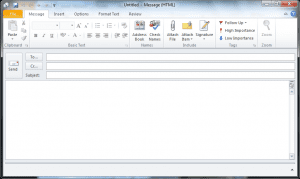PROGRAMME ALIGNMENT – 116935
SO – Specific Outcomes
AC – Assessment Criteria
| |
Enhance, edit and organise electronic messages using a Graphical User Interface (GUI)-based messaging application |
116935 |
NQF LEVEL 2 |
2 CREDITS |
| 1. |
SO’S |
AC’S |
MANUAL NAME |
UNIT/CHAPTER |
TOPIC |
PAGE |
| Explain legal, ethical and organisational issues in relation to the use of Email. S O 1 |
|
AC 1 |
Enhance, edit and organise electronic messages using a Graphical User Interface (GUI)-based messaging application |
1 |
Introduction to email |
9 |
| |
AC 2 |
Enhance, edit and organise electronic messages using a Graphical User Interface (GUI)-based messaging application |
1 |
Introduction to email |
13 |
| |
AC 3 |
Enhance, edit and organise electronic messages using a Graphical User Interface (GUI)-based messaging application |
1 |
Introduction to email |
15 |
| |
| 2. |
SO’S |
AC’S |
MANUAL |
UNIT/CHAPTER |
TOPIC |
PAGE |
| Manage E-mail messages.
\S O 2 |
|
AC 1 |
Enhance, edit and organise electronic messages using a Graphical User Interface (GUI)-based messaging application |
3 |
Managing and organising emails |
23 |
| |
AC 2 |
Enhance, edit and organise electronic messages using a Graphical User Interface (GUI)-based messaging application |
3 |
Managing and organising emails |
24 |
| |
AC 3 |
Enhance, edit and organise electronic messages using a Graphical User Interface (GUI)-based messaging application |
3 |
Managing and organising emails |
26 |
| |
AC 4 |
Enhance, edit and organise electronic messages using a Graphical User Interface (GUI)-based messaging application |
3 |
Managing and organising emails |
27 |
| |
AC 5 |
Enhance, edit and organise electronic messages using a Graphical User Interface (GUI)-based messaging application |
3 |
Managing and organising emails |
28 |
| |
| 3. |
SO’S |
AC’S |
MANUAL |
UNIT/CHAPTER |
TOPIC |
PAGE |
| Use the address book facilities of an electronic mail application.
SO 3 |
|
AC 1 |
Enhance, edit and organise electronic messages using a Graphical User Interface (GUI)-based messaging application |
4 |
Using the address book facility |
32 |
| |
AC 2 |
Enhance, edit and organise electronic messages using a Graphical User Interface (GUI)-based messaging application |
4 |
Using the address book facility |
33 |
| |
|
|
|
|
|
|
|
|
Specific Outcomes (Practical Competency, Skills) (SO)
Implies the ability to apply acquired knowledge practically in the workplace to achieve a related task. An observation checklist relating to the set assessment criteria are used to assess the learner’s achievement of the specific outcomes.
Assessment Criteria (AC)
The criteria against which the achievement of the specific outcomes of a unit standard are measured. Assessment criteria are normally set for specific outcomes only, with essential embedded knowledge implied in the assessment criteria.
